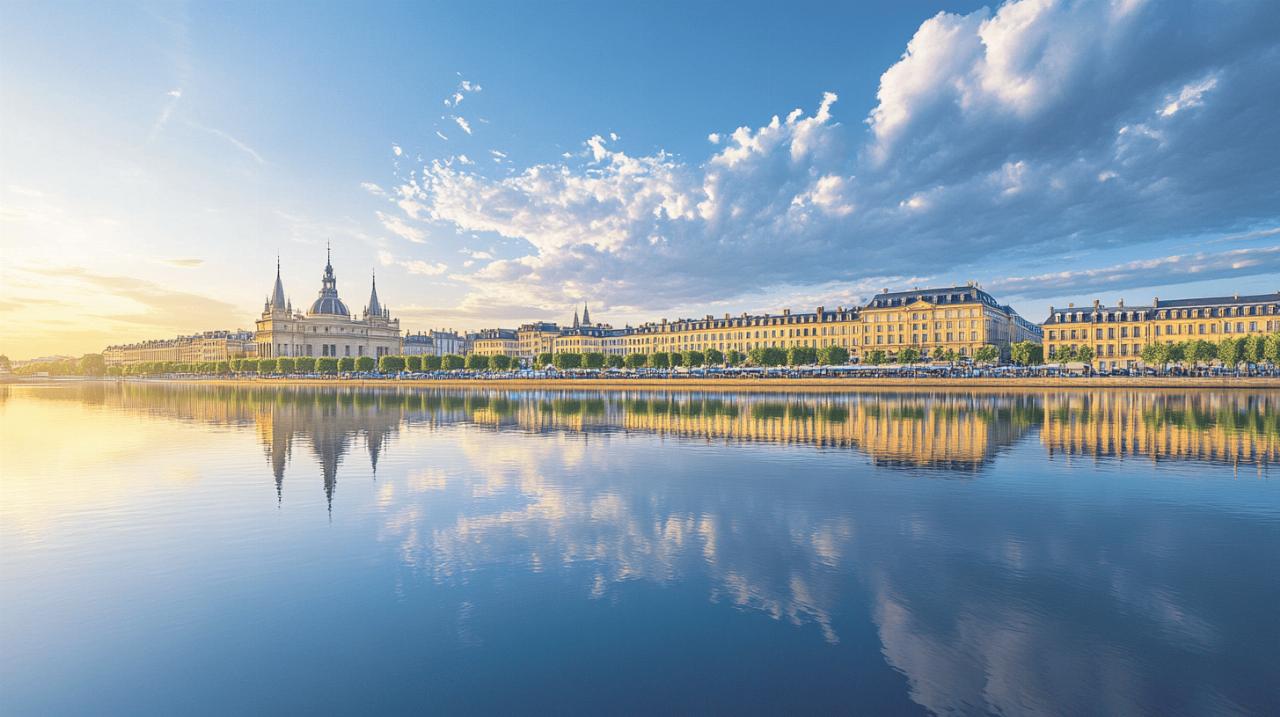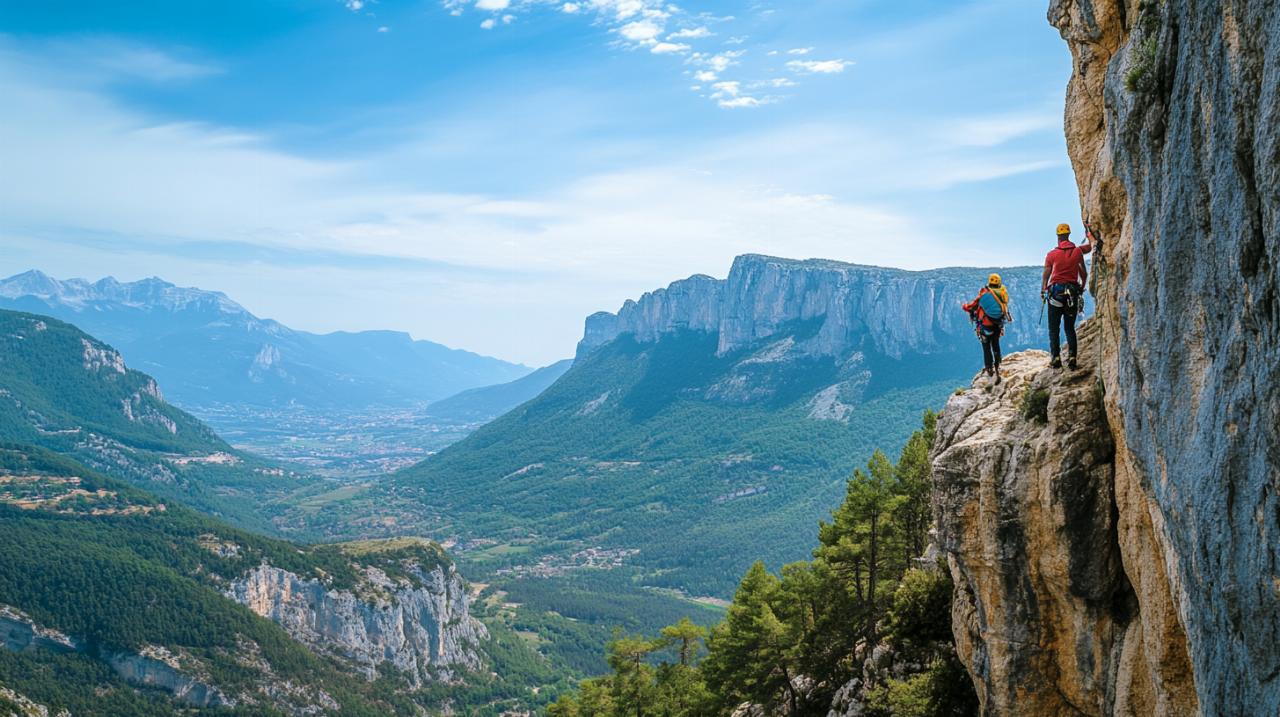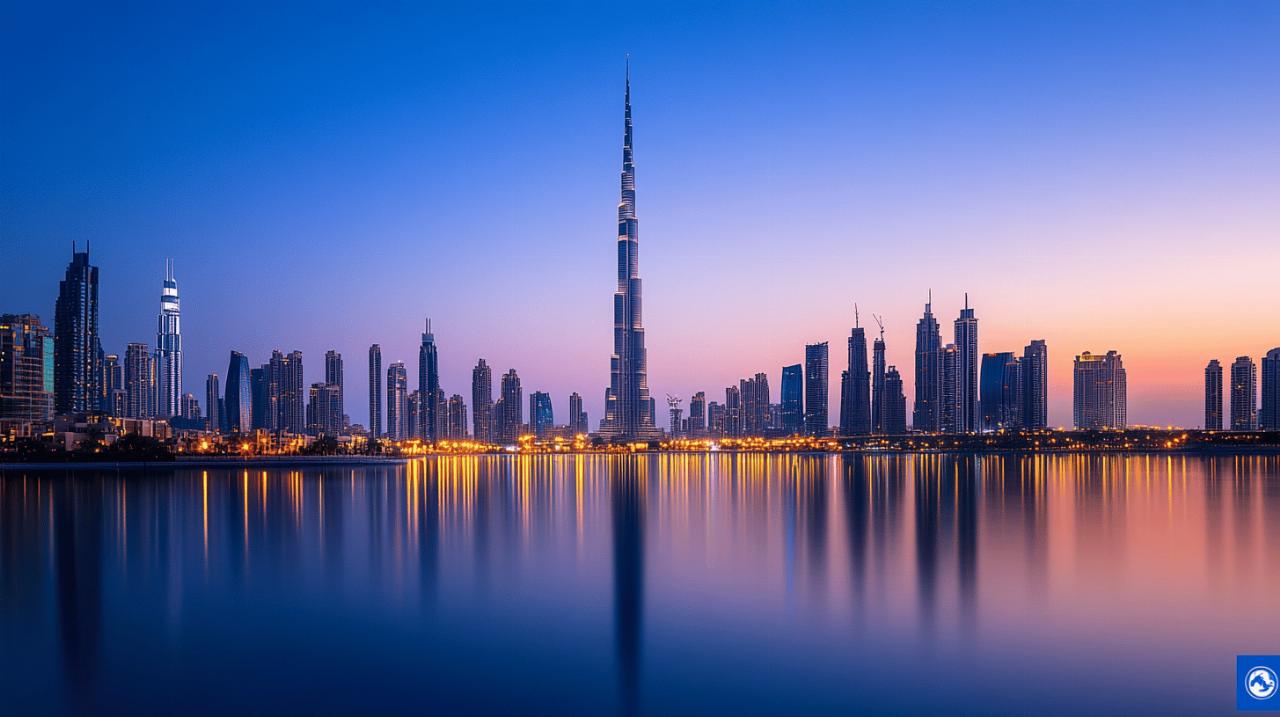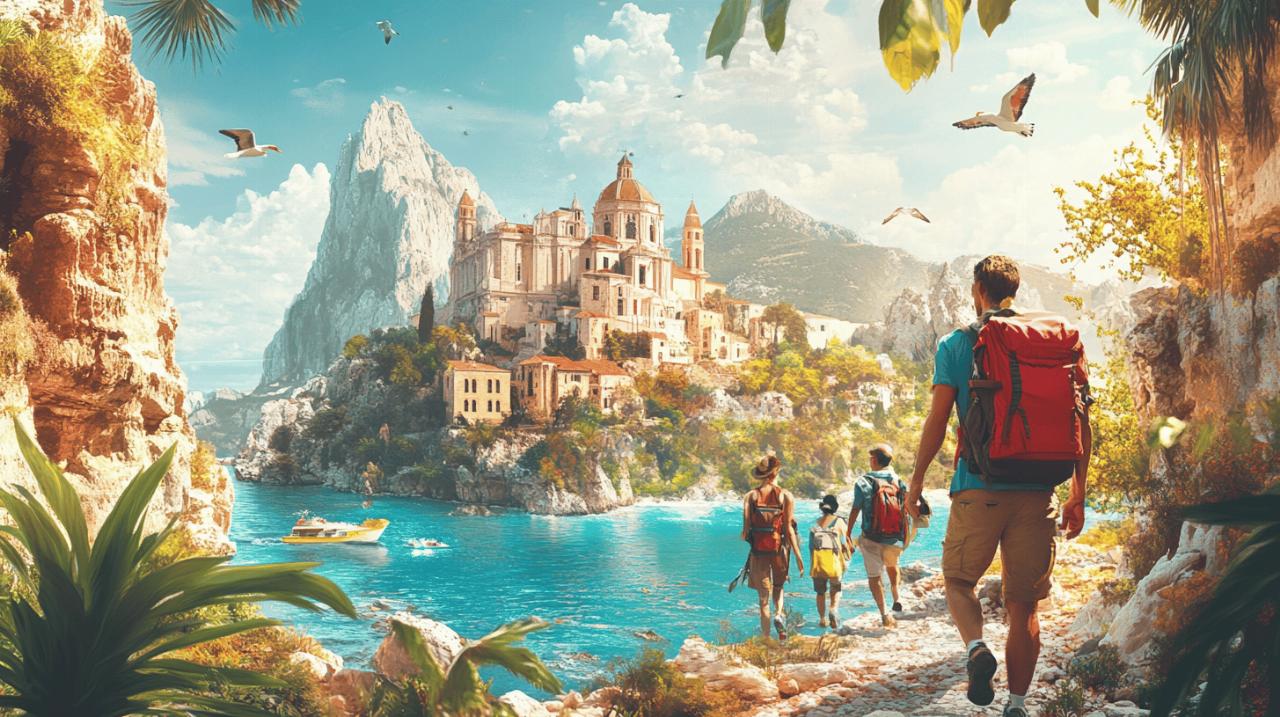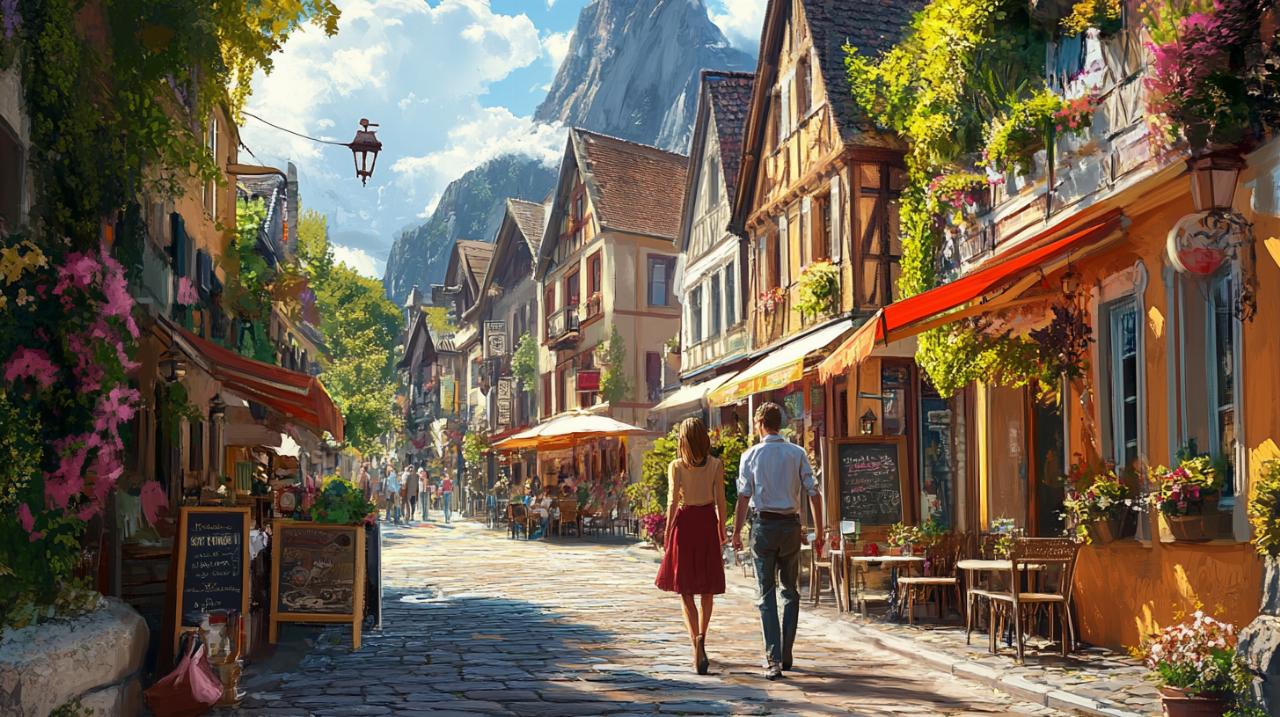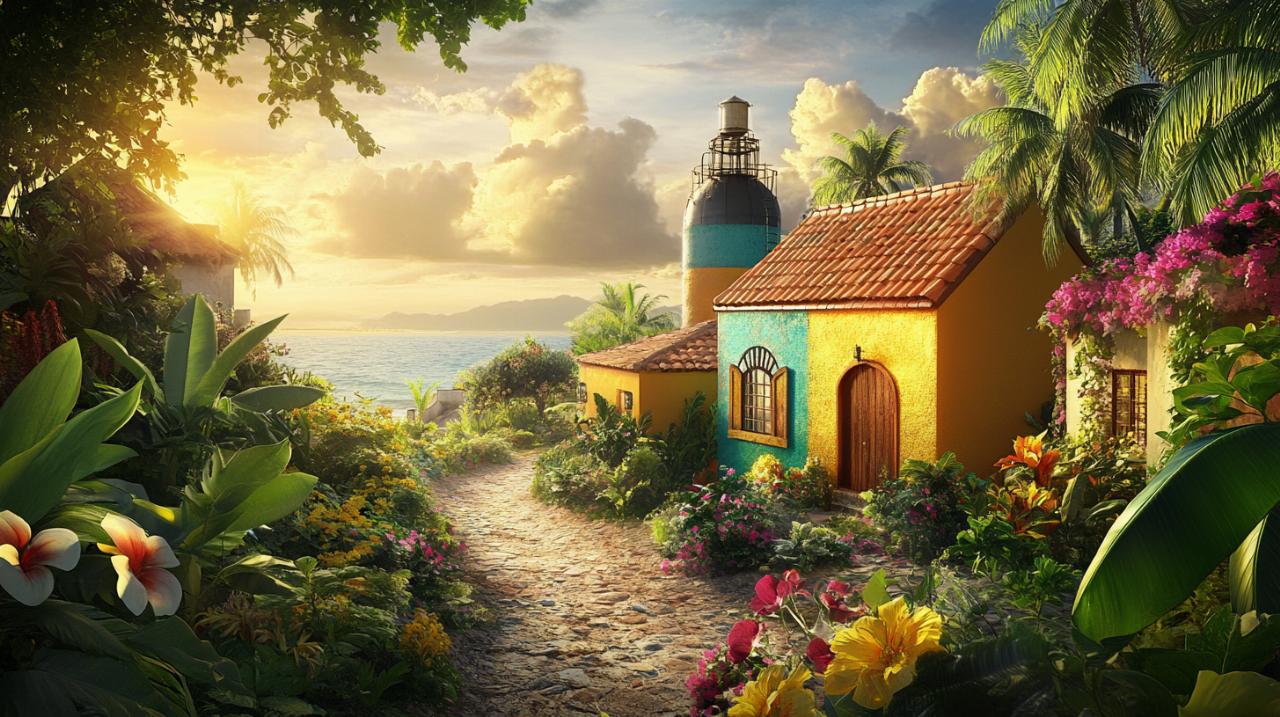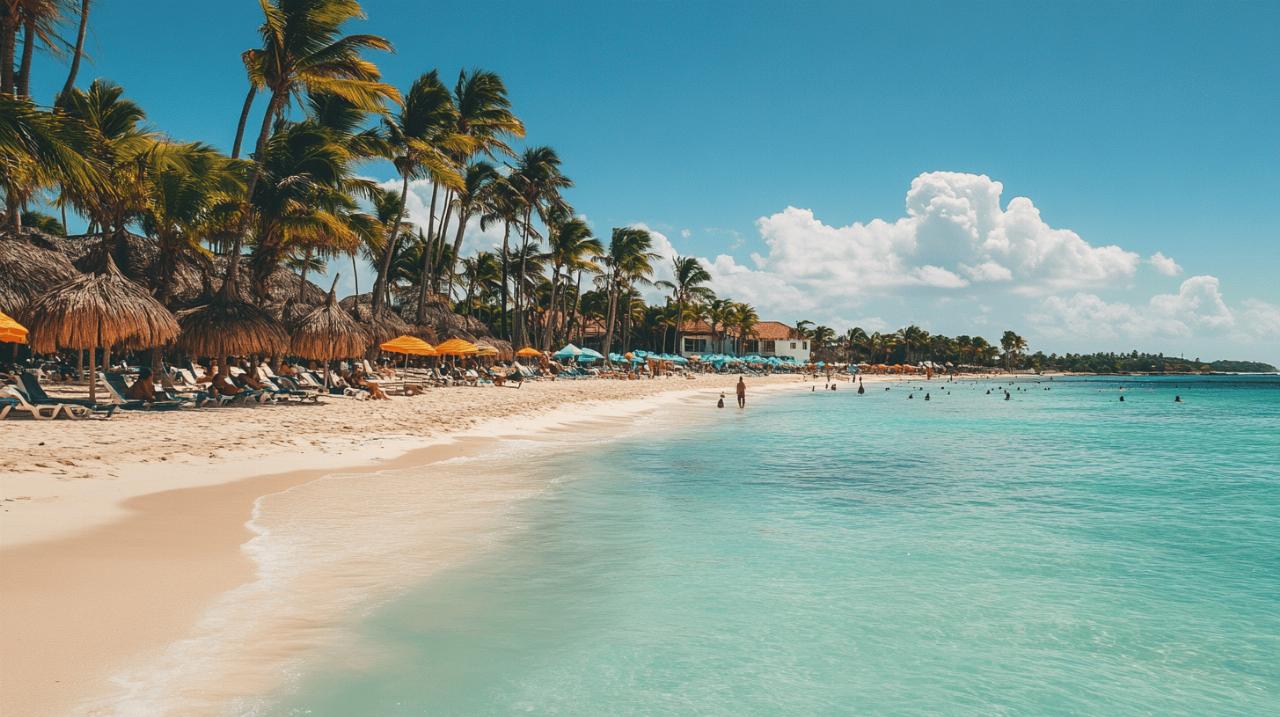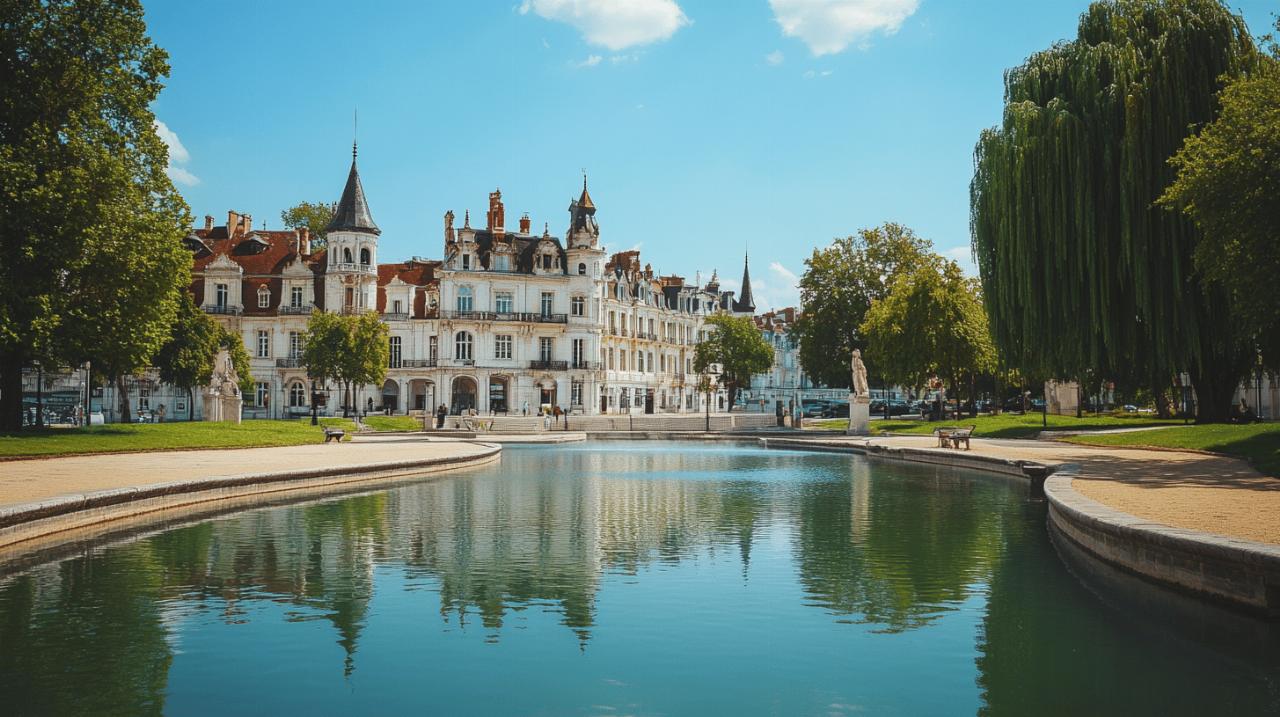Bordeaux and its surrounding regions offer a remarkable journey through centuries of architectural grandeur and natural beauty. From the elegant eighteenth-century facades that line the Garonne to the medieval villages perched atop rolling vineyards, this corner of France invites travellers to explore a living tapestry of history, culture, and world-renowned viticulture. Whether you are drawn to the refined symmetry of neoclassical buildings, the spiritual solemnity of ancient churches, or the dramatic coastal landscapes, this architectural tour promises a captivating experience that blends the past with the present in the most enchanting way.
Bordeaux's architectural splendour: a stroll through time
The Magnificent Place de la Bourse and the Water Mirror
The Place de la Bourse stands as one of the most iconic landmarks in Bordeaux, a testament to the city's opulent past and its enduring commitment to architectural excellence. Constructed between 1730 and 1755, this grand square embodies the elegance of 18th-century architecture and serves as a focal point for visitors exploring the Port de la Lune, the historic harbour district that earned Bordeaux recognition as a UNESCO World Heritage site in 2007. The square's symmetrical design, with its harmonious facades and ornate detailing, reflects the prosperity of an era when trade and commerce flourished along the Garonne river. Adjacent to the Place de la Bourse, the Miroir d'Eau captivates visitors with its mesmerising reflections and playful fountains. This water mirror, covering an impressive 3450 square metres, is the largest of its kind in the world and relies on an underground reservoir holding 800 cubic metres of water. As the surface alternates between mirror-like stillness and gentle misting, the interplay of light and shadow creates a dynamic visual experience that enchants both locals and tourists alike. Strolling along the quayside, one cannot help but be struck by the seamless integration of historic architecture with contemporary urban design, a hallmark of Bordeaux's thoughtful approach to preserving its heritage while embracing modernity.
Historic Quarters and Georgian-Style Façades Along the Garonne
Wandering through the pedestrianised streets of Bordeaux, visitors encounter a wealth of historical monuments that narrate the story of a city shaped by trade, religion, and political upheaval. The Grand Théâtre, which opened its doors in 1790, is a masterpiece of neoclassical design and served as the inspiration for the renowned Garnier opera house in Paris. Its grand portico, supported by twelve Corinthian columns, welcomes guests into a world of cultural refinement and artistic excellence. Not far from the theatre, the Église Notre-Dame, completed in 1707, showcases the baroque influence that swept through Bordeaux during the early eighteenth century. This church, often chosen as a backdrop for concerts and film shoots, stands as a testament to the city's enduring spiritual and cultural vitality. The Palais Rohan, constructed between 1771 and 1784, has served multiple roles throughout its history, from an archbishop's residence to a tribunal and palace, and today it functions as the city hall. Its stately presence and classical proportions exemplify the architectural ambitions of Bordeaux's civic leaders. Meanwhile, the Tour Pey Berland, a bell tower standing 66 metres tall with 233 steps leading to its summit, offers panoramic views over the city and the surrounding countryside. Climbing to the top rewards visitors with a sweeping perspective that captures the essence of Bordeaux's urban landscape, where centuries of architectural evolution coexist in a remarkably cohesive urban fabric.
Another striking feature of Bordeaux's historic centre is the Grosse Cloche, a medieval belfry that once formed part of the city's fortifications. Weighing an impressive 7800 kilograms, the bell rings on six specific dates each year, marking important civic and religious occasions. The Porte Cailhau, built between 1493 and 1496, served as the main entrance to the city from the Garonne and remains a powerful symbol of Bordeaux's medieval heritage. Walking through these ancient gates, visitors step back in time to an era when the city was a bustling hub of commerce and defence. The Musée d'Aquitaine, housed in a building that has witnessed centuries of change, showcases the rich history of Bordeaux and the wider Aquitaine region through its extensive collections of artefacts and exhibitions. Each corner of the city reveals a new layer of history, inviting exploration and reflection on the forces that have shaped this remarkable urban centre.
Saint-émilion: medieval charm and prestigious vineyards
Exploring the Monolithic Church and Underground Catacombs
Just a short journey from Bordeaux lies the enchanting village of Saint-Émilion, a place where medieval architecture and world-renowned viticulture converge to create a truly unique destination. The village itself is a living museum, with narrow cobbled streets winding between ancient stone buildings that seem frozen in time. At the heart of Saint-Émilion stands the monolithic church, an extraordinary feat of engineering and devotion carved directly into the limestone bedrock. This subterranean sanctuary, one of the largest of its kind in Europe, was hewn from solid rock by Benedictine monks during the twelfth century, and its cavernous interior exudes a sense of timeless spirituality. The church's vaulted ceilings and carved pillars bear witness to the skill and dedication of the medieval craftsmen who laboured in near-darkness to create a place of worship that would endure for generations. Descending into the cool, dimly lit space, visitors are transported to an era when faith and craftsmanship were inseparable, and the line between architecture and sculpture was beautifully blurred.
Adjacent to the monolithic church, the catacombs of Saint-Émilion extend beneath the village, forming a labyrinthine network of tunnels and chambers that once served as burial sites and storage areas for the monks. These underground passages, carved from the same limestone that gives the region's vineyards their distinctive terroir, offer a fascinating glimpse into the hidden history of the village. As you explore the catacombs, the interplay of light and shadow on the rough-hewn walls creates an atmosphere of mystery and reverence, reminding visitors of the deep connection between the land, the people, and the architectural heritage of Saint-Émilion. The village's status as a UNESCO World Heritage site reflects its exceptional universal value, not only as a place of architectural and historical significance but also as a living example of how viticulture and community life have shaped the landscape over the centuries.
Château Tours and Wine Tasting Experiences in the Village
Saint-Émilion's fame extends far beyond its architectural treasures, as the village is also home to some of the most prestigious vineyards in the world. The surrounding hillsides are blanketed with vines that produce wines of extraordinary quality and character, and many of the local châteaux open their doors to visitors eager to learn about the art and science of winemaking. A tour of a Saint-Émilion château offers a comprehensive introduction to the region's viticultural heritage, from the carefully tended vineyards to the state-of-the-art cellars where the wines are aged to perfection. As you wander through the cellars, the aroma of oak and fermenting grapes fills the air, and the serene atmosphere invites contemplation of the centuries-old traditions that continue to define this remarkable region. Tasting the wines in the company of knowledgeable guides provides an opportunity to appreciate the nuances of flavour and the influence of terroir, that elusive combination of soil, climate, and tradition that gives each wine its unique character. The experience is both educational and sensory, offering a deeper understanding of the connection between the land and the liquid gold that flows from the region's vineyards.
Walking through the village of Saint-Émilion, visitors encounter a wealth of architectural details that speak to the village's medieval origins and its enduring appeal. Stone archways frame views of sun-dappled courtyards, and ivy-clad walls provide a picturesque backdrop for leisurely strolls. The village's compact size and pedestrian-friendly layout make it easy to explore on foot, and every corner reveals a new vista or a hidden gem waiting to be discovered. Whether you are drawn by the promise of exceptional wines, the allure of ancient architecture, or simply the desire to immerse yourself in the timeless beauty of rural France, Saint-Émilion offers an experience that lingers long after you have returned home.
The médoc wine route: prestigious estates and grand architecture
Visiting iconic châteaux and their classical designs
 The Médoc region, stretching northwest from Bordeaux along the left bank of the Gironde estuary, is synonymous with some of the finest wines ever produced. This storied landscape is dotted with grand châteaux, each one a testament to the wealth and ambition of the families who have devoted their lives to perfecting the art of viticulture. The architecture of these estates ranges from the elegantly restrained to the flamboyantly ornate, reflecting the varied tastes and historical periods during which they were constructed. Many of the châteaux feature classical facades with symmetrical proportions, grand entrances flanked by columns, and manicured gardens that evoke the formal French garden tradition. Visiting these estates provides not only an opportunity to taste some of the world's most celebrated wines but also a chance to admire the architectural grandeur that has come to define the Médoc. The interiors of the châteaux often reveal richly decorated salons, imposing staircases, and wine cellars that stretch deep into the earth, where rows of oak barrels silently age the precious vintages. The sense of history and continuity is palpable, as generation after generation of winemakers have left their mark on both the landscape and the built environment.
The Médoc region, stretching northwest from Bordeaux along the left bank of the Gironde estuary, is synonymous with some of the finest wines ever produced. This storied landscape is dotted with grand châteaux, each one a testament to the wealth and ambition of the families who have devoted their lives to perfecting the art of viticulture. The architecture of these estates ranges from the elegantly restrained to the flamboyantly ornate, reflecting the varied tastes and historical periods during which they were constructed. Many of the châteaux feature classical facades with symmetrical proportions, grand entrances flanked by columns, and manicured gardens that evoke the formal French garden tradition. Visiting these estates provides not only an opportunity to taste some of the world's most celebrated wines but also a chance to admire the architectural grandeur that has come to define the Médoc. The interiors of the châteaux often reveal richly decorated salons, imposing staircases, and wine cellars that stretch deep into the earth, where rows of oak barrels silently age the precious vintages. The sense of history and continuity is palpable, as generation after generation of winemakers have left their mark on both the landscape and the built environment.
Understanding the terroir through architectural heritage
The relationship between architecture and terroir in the Médoc is a subtle but profound one. The design and construction of the châteaux and their associated buildings reflect a deep understanding of the local climate, soil, and topography. Cellars are often built partially underground to maintain stable temperatures and humidity levels, essential for the proper ageing of wine. The layout of the vineyards, the orientation of the buildings, and even the materials used in construction all speak to a harmonious integration of human endeavour with the natural environment. As you travel along the wine route, the landscape itself becomes a narrative of this enduring partnership between people and place. The gently rolling hills, the meticulously tended rows of vines, and the imposing silhouettes of the châteaux combine to create a scene that is both picturesque and deeply evocative of the region's cultural identity. The Médoc wine route is not merely a journey through a series of vineyards; it is an exploration of how architectural heritage and viticultural tradition have shaped one another over centuries, resulting in a landscape that is as rich in history as it is in flavour.
Arcachon Basin and the Dune du Pilat: Natural Wonders Beyond the City
The belle époque architecture of arcachon's winter town
A short drive from the vineyards and historic quarters of Bordeaux brings you to the coast, where the Arcachon Basin offers a delightful contrast to the city's urban sophistication. The town of Arcachon, renowned for its oyster farming and seaside charm, boasts a remarkable collection of Belle Époque villas that transport visitors to the glamorous heyday of the late nineteenth and early twentieth centuries. The Winter Town, or Ville d'Hiver, is particularly striking, with its tree-lined avenues and whimsical architecture that blends Gothic, Moorish, and Swiss chalet influences into a style that is uniquely Arcachonnaise. These villas, often painted in soft pastels and adorned with intricate woodwork, turrets, and balconies, evoke a sense of leisure and elegance that defined the era. Strolling through this neighbourhood, one can easily imagine the fashionable society figures who once promenaded here, drawn by the promise of sea air and the health benefits of the coastal climate. The architectural diversity and attention to detail in the Winter Town make it a treasure trove for those interested in the evolution of seaside resort architecture and the cultural history of the French Atlantic coast.
Ascending europe's tallest sand dune for panoramic views
Beyond the charming streets of Arcachon lies one of nature's most awe-inspiring creations: the Dune du Pilat. This colossal sand dune, the tallest in Europe, rises dramatically from the edge of the Arcachon Basin and offers visitors a panoramic vista that stretches across the Atlantic Ocean, the dense pine forests of the Landes, and the shimmering waters of the basin itself. Climbing the dune is an exhilarating experience, as the soft sand shifts beneath your feet and the wind whips around you, carrying the scent of salt and pine. The effort required to reach the summit is amply rewarded by the breathtaking views that unfold in every direction. From the top, the landscape reveals itself as a complex interplay of natural forces, where wind, water, and sand have sculpted a terrain that is constantly in motion, yet has endured for millennia. The Dune du Pilat stands as a reminder of the power and beauty of the natural world, offering a striking counterpoint to the carefully designed architecture and cultivated landscapes of Bordeaux and its surrounding regions. It is a place where the boundary between the built and the natural dissolves, and where visitors can experience the sublime beauty of the French coast in its most elemental form.
This architectural tour of Bordeaux and its surroundings reveals a region of extraordinary diversity and richness. From the grand squares and historic monuments of the city centre to the medieval charm of Saint-Émilion, the prestigious châteaux of the Médoc, and the natural splendour of the Arcachon Basin, each destination offers its own unique insights into the history, culture, and landscape of this remarkable corner of France. Whether you are captivated by the elegance of 18th-century architecture, the spiritual depth of ancient churches, the refined pleasures of world-class wines, or the raw beauty of Europe's tallest sand dune, this journey through Bordeaux and its environs promises to leave a lasting impression and a deeper appreciation for the ways in which architecture, nature, and human endeavour can combine to create places of enduring beauty and significance.

